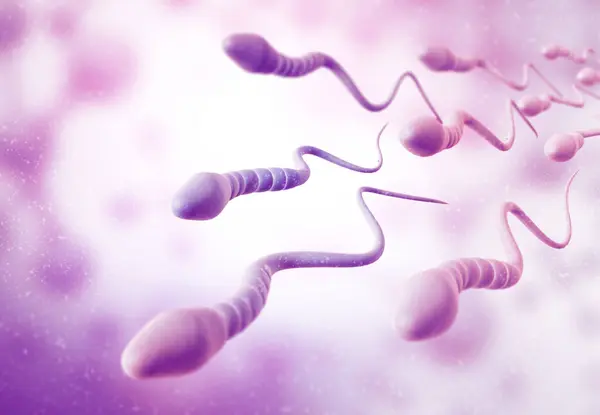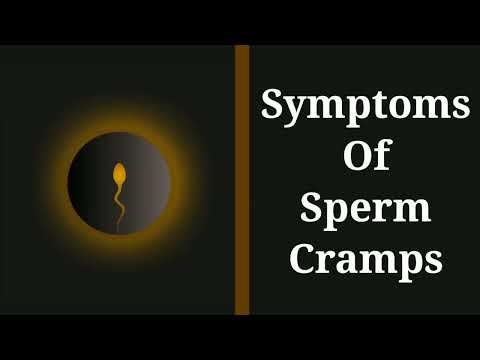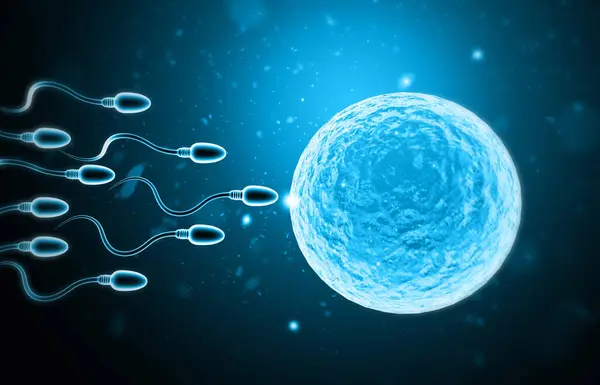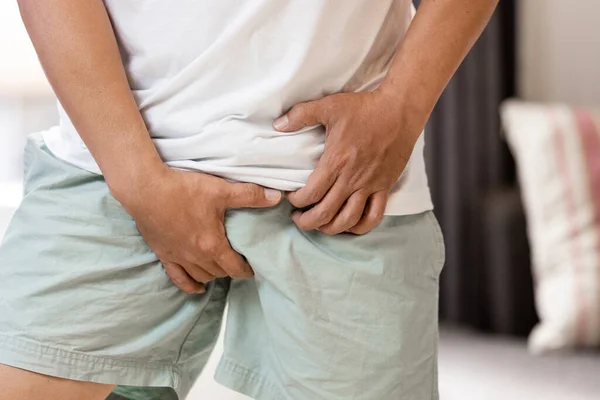Sperm cramps refer to the abdominal pain or discomfort some men experience related to the reproductive system, particularly after ejaculation. This condition, though not widely discussed, can cause significant concern for those affected. Another name for sperm cramps is “epididymal hypertension“, commonly referred to as “blue balls.“
Several misconceptions surround sperm cramps, such as the belief that they are purely psychological or that they indicate a serious underlying health issue. However, understanding the actual causes and symptoms can help dispel these myths.
Grasping the nature of sperm cramps is crucial for both prevention and effective management. Educating oneself about this condition can alleviate unnecessary anxiety and guide individuals towards appropriate treatments.
Table of Contents
ToggleWhat Causes Sperm Cramps?
Understanding the Physiology of Sperm Cramps
How Sperm Cramps Occur:

Sperm cramps happen due to various factors affecting the male reproductive system. These cramps are often a result of muscular contractions, inflammation, or other physiological responses. The discomfort typically manifests in the lower abdomen, groin, or testicular area, which are sensitive regions linked to sperm production and ejaculation.
The Role of the Male Reproductive System in Sperm Cramps:
The male reproductive system plays a crucial role in the occurrence of sperm cramps. During ejaculation, muscles contract to propel semen through the urethra. Any disruption or inflammation in this process can lead to cramps. The reproductive organs, including the testes, epididymis, vas deferens, and prostate, are intricately involved, and issues in these areas can contribute to the discomfort experienced as blue balls.
Common Causes of Sperm Cramps
Infections:
- Epididymitis: Inflammation of the epididymis, often caused by bacterial infections, can lead to significant discomfort and sperm cramps.
- Urinary Tract Infections (UTIs): UTIs can cause inflammation and pain in the lower abdomen, contributing to blue balls.
- Sexually Transmitted Infections (STIs): STIs like chlamydia and gonorrhea can infect the reproductive organs, leading to sperm cramps.
Testicular Issues:
- Testicular Torsion: This condition occurs when the spermatic cord twists, cutting off blood flow to the testicle, resulting in severe pain and epididymal hypertension.
- Varicocele: Enlarged veins in the scrotum can cause discomfort and contribute to blue balls.
Muscle Tension:
- Pelvic Floor Muscles: Tension or spasms in the pelvic floor muscles can lead to sperm cramps. This can be due to physical strain or stress-related muscle tightening.
Prostate Problems:
- Prostatitis: Inflammation of the prostate gland can cause pelvic pain and epididymal hypertension.
- Enlarged Prostate: An enlarged prostate can exert pressure on surrounding areas, leading to discomfort and pain.
Repetitive Strain:
- Activities like horseback riding or cycling can put pressure on the groin area, leading to repetitive strain and testicular discomfort.
Overexertion:
- Intensive Workouts and Heavy Lifting: Overexertion during physical activities can strain the muscles and tissues in the groin and abdomen, causing testicular discomfort.
Dehydration:
- Inadequate hydration can lead to muscle cramps, including those in the abdominal region, contributing to testicular pain.
Hernias:
- Abdominal hernias can cause pain and discomfort, potentially leading to sperm cramps.
Psychological Factors:
- Anxiety, Stress, and Depression: Mental health issues can contribute to physical symptoms, including muscle tension and testicular discomfort.
Hormonal Imbalances:
- Hormonal changes or imbalances can affect the reproductive system and potentially lead to sperm cramps.
Symptoms of Sperm Cramps

Identifying Sperm Cramps
Pain Localization:
Sperm cramps can manifest in various parts of the lower body, primarily focusing on the reproductive system. The pain is often localized in the testicles, scrotum, lower abdomen, and perineum. Understanding where the pain is felt can help in identifying sperm cramps and distinguishing them from other types of abdominal or pelvic pain.
Pain Intensity:
The intensity of blue balls can range from mild discomfort to severe, debilitating pain. Some men may experience a slight ache or twinge, while others might feel sharp, intense pain. The variability in pain intensity is a key characteristic of sperm cramps and can depend on the underlying cause and individual pain threshold.
Duration of Pain:
Sperm cramps can last for different periods, from brief, transient cramps to prolonged, ongoing discomfort. For some, the pain might be a fleeting sensation following ejaculation, while others may suffer from continuous pain that lasts for hours or even days. Recognizing the duration of sperm cramps can aid in seeking appropriate treatment and understanding the condition’s impact on daily life.
Associated Symptoms
Swelling or Tenderness:
In addition to sperm cramps, men may notice swelling or tenderness in the affected areas. The scrotum and testicles might become particularly sensitive to touch, and this tenderness can exacerbate the discomfort associated with sperm cramps.
Changes in Sperm Quality:
Some men with sperm cramps might observe changes in sperm quality, such as alterations in volume, consistency, or color of the ejaculate. These changes can be indicative of underlying issues contributing to sperm cramps, such as infections or hormonal imbalances.
Discomfort During Ejaculation:
Sperm cramps can also lead to pain or discomfort during ejaculation. This symptom can be particularly distressing and may affect sexual function and pleasure, making it a significant aspect of testicular discomfort that requires attention.
Reduced Sexual Pleasure or Desire:
The pain and discomfort associated with sperm cramps can result in a decreased interest in sexual activity. Men experiencing testicular discomfort may find sexual pleasure diminished and might avoid intercourse due to the fear of pain, further impacting their quality of life and relationships.
Stress and Anxiety Due to Pain:
Chronic pain from sperm cramps can lead to heightened stress and anxiety. The persistent discomfort and worry about potential underlying causes can affect mental health, creating a cycle where stress exacerbates the physical symptoms of testicular discomfort.
Diagnosis of Sperm Cramps
How Are Sperm Cramps Diagnosed?
Medical History Review:
Diagnosing sperm cramps begins with a thorough medical history review. Your doctor will ask about your symptoms, their onset, duration, and any factors that seem to trigger or alleviate the pain. This information is crucial for understanding the context of your sperm cramps and ruling out other potential causes of abdominal or pelvic pain.
Physical Examination:
A physical examination is a key component in diagnosing sperm cramps. During this exam, the doctor will check for tenderness, swelling, or any abnormalities in the testicles, scrotum, and lower abdomen. They may also assess your pelvic floor muscles and prostate to identify any issues that could be contributing to sperm cramps.
Diagnostic Tests:
- Ultrasound: An ultrasound of the scrotum and testicles can help visualize structures and detect abnormalities such as varicoceles, testicular torsion, or epididymitis, which can cause sperm cramps.
- MRI (Magnetic Resonance Imaging): MRI scans provide detailed images of soft tissues and organs, helping to identify issues that might not be visible on an ultrasound.
- CT Scans (Computed Tomography): CT scans offer cross-sectional images of the abdominal and pelvic regions, which can be useful in detecting hernias, tumors, or other abnormalities that could cause sperm cramps.
- Blood Tests: Blood tests can help identify infections, hormonal imbalances, or other underlying conditions that might be contributing to sperm cramps.
Questions to Ask Your Doctor

What Should I Expect During a Physical Examination?
When preparing for a visit to diagnose sperm cramps, you might wonder what the physical examination entails. Asking your doctor about what to expect can help you feel more at ease. Typically, the examination will involve a gentle palpation of the testicles and scrotum to check for tenderness or swelling and may include a digital rectal exam to assess the prostate.
What Diagnostic Tests Might Be Necessary?
Inquiring about the specific diagnostic tests needed to investigate sperm cramps is important. Your doctor can explain the purpose of each test, how it will be conducted, and what they are looking for. This might include ultrasounds, MRI scans, or blood tests, depending on your symptoms and initial examination findings.
How Can I Prepare for These Tests?
Preparation for diagnostic tests can vary. It’s helpful to ask your doctor how to prepare for tests related to blue balls. For example, you may need to fast before certain blood tests or avoid specific activities before imaging tests. Knowing these details in advance can ensure the tests are conducted smoothly and yield accurate results.
Treatment Options for Sperm Cramps
Pain Management
Over-the-Counter Painkillers:
To manage sperm cramps, over-the-counter painkillers can be very effective. Medications such as acetaminophen and ibuprofen are commonly used to alleviate pain and reduce inflammation. These painkillers can help mitigate the discomfort associated with epididymal hypertension and improve overall well-being.
Warm Compresses:
Applying warm compresses to the affected area can also help relieve epididymal hypertension. The warmth increases blood flow and relaxes tense muscles, which can reduce pain and promote healing. Using a warm compress several times a day can be particularly beneficial for managing sperm cramps.
Medical Treatments
Antibiotic Therapy for Infections:
If sperm cramps are caused by infections such as epididymitis or UTIs, antibiotic therapy is essential. These medications help eliminate the underlying infection, thereby reducing inflammation and relieving sperm cramps.
Hormonal Treatments:
In cases where sperm cramps are due to hormonal imbalances, hormone therapy might be recommended. This treatment can help restore normal hormone levels and alleviate symptoms associated with blue balls.
Surgical Interventions:
- Varicocele Repair: Surgical procedures to repair varicoceles can relieve epididymal hypertension by correcting the enlarged veins in the scrotum.
- Hernia Surgery: Hernias that cause sperm cramps may require surgical intervention to correct the protrusion of abdominal contents.
- Testicular Torsion Surgery: Emergency surgery for testicular torsion can save the affected testicle and relieve severe sperm cramps.
Alternative and Complementary Treatments
Physical Therapy:
Physical therapy, particularly pelvic floor therapy, can be effective in treating epididymal hypertension. These therapies focus on strengthening and relaxing the pelvic floor muscles, which can help reduce pain and prevent recurrence of epididymal hypertension
Relaxation Techniques:
- Meditation: Practicing meditation can help manage stress and reduce the intensity of sperm cramps by promoting relaxation.
- Deep Breathing Exercises: These exercises can help calm the nervous system and alleviate the discomfort associated with epididymal hypertension.
Lifestyle Modifications

Regular Exercise:
Engaging in regular physical activity can improve overall health and reduce the occurrence of sperm cramps. Exercise helps maintain healthy blood flow and muscle tone, which can prevent cramps and improve reproductive health.
Balanced Diet and Adequate Hydration:
A balanced diet rich in essential nutrients and proper hydration can support the body’s ability to heal and prevent epididymal hypertension. Avoiding dehydration is particularly important, as it can contribute to muscle cramps and overall discomfort.
Avoiding Tight Clothing:
Wearing loose-fitting clothing can reduce pressure on the groin and lower abdomen, helping to prevent blue balls. Tight clothing can exacerbate discomfort and lead to increased pain.
Managing Stress:
Stress management techniques are crucial for preventing epididymal hypertension. High stress levels can lead to muscle tension and pain, so incorporating stress-reducing activities like yoga, meditation, or hobbies can be beneficial.
Prevention of Sperm Cramps
Daily Habits to Prevent Sperm Cramps
Good Hygiene Practices:
Maintaining good hygiene is essential in preventing epididymal hypertension. Regular cleaning of the genital area can help reduce the risk of infections such as UTIs and epididymitis, which can cause epididymal hypertension. Proper hygiene includes daily washing with mild soap and water and wearing clean underwear.
Wearing Loose-Fitting Clothing:
Choosing loose-fitting clothing, especially around the groin area, can prevent epididymal hypertension. Tight clothing can restrict blood flow and cause discomfort, leading to sperm cramps. Opt for breathable fabrics and well-fitted underwear to maintain comfort and reduce the risk of cramps.
Staying Hydrated:
Adequate hydration is crucial for preventing muscle cramps, including epididymal hypertension. Drinking enough water helps maintain overall health and keeps the muscles, including those in the pelvic area, functioning properly. Try to drink eight glasses of water or more a day to stay hydrated.
Limiting Alcohol and Caffeine Intake:
Excessive alcohol and caffeine consumption can lead to dehydration and increased muscle tension, contributing to blue balls. Limiting intake of these substances can help reduce the occurrence of cramps. Moderation is key to maintaining a healthy lifestyle and preventing epididymal hypertension.
Avoiding Tobacco and Illicit Drugs:
Tobacco and illicit drugs can have numerous negative effects on health, including contributing to sperm cramps. These substances can affect blood circulation and muscle function, increasing the risk of cramps. Avoiding them can improve overall health and reduce the likelihood of experiencing blue balls.
Sexual Health Tips
Engaging in Regular Sexual Activity:
Regular sexual activity can help maintain a healthy reproductive system and reduce the risk of sperm cramp. Frequent ejaculation can prevent the buildup of sperm and reduce pressure in the reproductive organs, helping to prevent cramps.
Avoiding Excessive Ejaculation:
While regular sexual activity is beneficial, excessive ejaculation can lead to sperm cramp. It is important to find a balance and avoid overexerting the reproductive system. Moderation is essential in preventing sperm cramp and maintaining sexual health.
Clear Communication with Sexual Partners:
Effective communication with sexual partners about comfort levels and any discomfort experienced during or after sexual activity is crucial. Being open about sperm cramp can help in finding mutually agreeable solutions and preventing further discomfort. Ensuring that both partners are comfortable and informed can reduce the risk of sperm cramp.
Impact of Sperm Cramps on Fertility

Understanding the Connection Between Sperm Cramps and Fertility
How Sperm Cramps Affect Sperm Quality:
Sperm cramp can have a direct impact on sperm quality. Inflammation or infections causing these cramps can affect sperm motility, morphology, and count. Conditions like epididymitis and prostatitis, which often cause sperm cramps, can lead to lower sperm quality by affecting the environment in which sperm are produced and stored. Thus, there may be a decrease in the likelihood of successful fertilization.
Long-Term Implications for Male Fertility:
The long-term implications of sperm cramps on male fertility can be significant. Chronic conditions that cause persistent sperm cramp, such as varicocele or untreated infections, can lead to ongoing damage to the reproductive organs. This damage can result in reduced sperm production and quality over time, potentially leading to infertility. It is essential to address the underlying causes of epididymal hypertension promptly to prevent long-term fertility issues.
When to Seek Professional Help
Recognizing Persistent Symptoms:
It is important to seek professional help if sperm cramps persist or worsen. Persistent symptoms such as ongoing pain, swelling, or changes in ejaculation can indicate underlying conditions that require medical attention. Recognizing when sperm cramps are not resolving with basic care is crucial for timely intervention and preventing more severe complications.
Importance of Early Intervention:
Early intervention is key in managing sperm cramps and their potential impact on fertility. Consulting a healthcare provider at the first sign of persistent or severe sperm cramp can lead to early diagnosis and treatment of conditions like infections, varicocele, or hormonal imbalances. Early treatment can mitigate the adverse effects on sperm quality and overall reproductive health, preserving fertility and improving long-term outcomes.
Coping with Sperm Cramps
Emotional and Psychological Impact
Dealing with Stress and Anxiety:
Sperm cramp can significantly impact emotional and psychological well-being, leading to stress and anxiety. Dealing with the discomfort and the uncertainty about its cause can be challenging. It’s important to adopt strategies to manage stress and anxiety effectively. Techniques such as mindfulness, meditation, and deep breathing exercises can help in reducing the mental strain associated with sperm cramps. Additionally, maintaining a positive outlook and focusing on proactive management can alleviate some of the anxiety related to this condition.
Seeking Support from Loved Ones:
Support from loved ones plays a crucial role in coping with blue balls. Sharing your concerns and experiences with trusted family members or friends can provide emotional relief and practical support. Open communication can help reduce feelings of isolation and helplessness, making it easier to manage the emotional impact of epididymal hypertension. Loved ones can also offer encouragement and assist in seeking professional help when needed.
Finding Professional Support

Consulting with Urologists and Fertility Specialists:
Seeking professional support from urologists and fertility specialists is essential for managing blue balls. These healthcare providers can offer expert diagnosis and tailored treatment plans to address the underlying causes of the cramps. Urologists specialize in male reproductive health and can provide comprehensive care, while fertility specialists can help if sperm cramps are affecting fertility. Regular consultations and following medical advice are key to effectively managing and coping with epididymal hypertension.
Counseling and Therapy Options:
Counseling and therapy can be beneficial for those dealing with the emotional impact of sperm cramp. Mental health professionals, such as psychologists or counselors, can offer coping strategies and therapeutic interventions to help manage stress, anxiety, and any related emotional issues. Therapy can provide a safe space to discuss concerns and develop resilience in facing the challenges associated with sperm cramps. Cognitive-behavioral therapy (CBT) and other therapeutic approaches can be particularly effective in addressing the psychological aspects of this condition.
Frequently Asked Questions (FAQs)
What are Sperm Cramps?
Sperm cramp refer to pain or discomfort experienced in the lower abdomen, testicles, or scrotum related to the male reproductive system, particularly after ejaculation. They can be caused by various factors, including infections, muscle tension, and other reproductive system issues.
How Painful are Sperm Cramps?
The intensity of sperm cramp can vary widely. Some men experience mild discomfort, while others suffer from severe pain. The pain can be sharp and sudden or dull and persistent, depending on the underlying cause.
Are Sperm Cramps Normal?
Sperm cramps are not uncommon but are not considered normal. They can indicate underlying health issues that may need medical attention. While occasional cramps may not be a cause for concern, frequent or severe pain should be evaluated by a healthcare professional.
When Do Sperm Cramps Start?
Sperm cramp can occur at various times, often after ejaculation. They may start immediately following sexual activity or a few hours later. The timing can vary based on the individual’s health and the specific cause of the cramps.
Can Sperm Cramps Affect My Fertility?
Yes, sperm cramp can affect fertility, especially if they are caused by conditions like infections, varicocele, or hormonal imbalances. These conditions can impact sperm quality and production, potentially leading to fertility issues.
What are the Treatment Options for Sperm Cramps?
Treatment options for sperm cramp include over-the-counter painkillers, warm compresses, antibiotic therapy for infections, hormonal treatments, and surgical interventions for conditions like varicocele or testicular torsion. Physical therapy, relaxation techniques, and lifestyle modifications can also help manage and prevent sperm cramp.
How Can I Prevent Sperm Cramps?
Prevention strategies for sperm cramps include maintaining good hygiene, wearing loose-fitting clothing, staying hydrated, limiting alcohol and caffeine intake, avoiding tobacco and illicit drugs, engaging in regular sexual activity without overexertion, and managing stress through relaxation techniques.
When Should I See a Doctor About Sperm Cramps?
You should see a doctor about sperm cramp if the pain is persistent, severe, or accompanied by other symptoms such as swelling, changes in ejaculation, or fever. Early intervention can help diagnose and treat any underlying conditions, preventing long-term complications.
Conclusion

Summary of Key Points
Sperm cramps are abdominal or pelvic pains associated with the male reproductive system, often occurring after ejaculation. Understanding the causes, which include infections, muscle tension, and hormonal imbalances, is crucial for effective management. Symptoms range from mild discomfort to severe pain, and diagnostic methods include medical history review, physical examinations, and various diagnostic tests. Treatment options encompass pain management, medical treatments, alternative therapies, and lifestyle modifications. Prevention strategies focus on maintaining good hygiene, wearing loose-fitting clothing, staying hydrated, and managing stress. Recognizing the emotional impact and seeking professional support can also play a significant role in coping with sperm cramp.
Encouragement to Seek Professional Help
If you experience persistent or severe sperm cramp, it is essential to consult with a healthcare provider. Early diagnosis and treatment can prevent long-term complications and improve overall reproductive health. Don’t hesitate to seek professional advice to address any concerns and receive appropriate care.
Read Also:
-
Degloved Face: Causes, Symptoms, Effective Treatment Options, and Recovery
-
Coughing Up Yellow Mucus? – Understand These 5 Phlegm Colors, Their Causes, and Treatment Options
-
7 Key Reasons Why Abdominal Pain When Coughing Shouldn’t Be Ignored
-
At Home Allergy Test: All You Need to Know About Allergens, Testing, and Results
Final Thoughts on Managing and Preventing Sperm Cramps
Managing and preventing sperm cramp involves a combination of medical intervention, lifestyle changes, and emotional support. By understanding the condition, adopting healthy habits, and seeking timely medical help, you can effectively reduce the impact of sperm cramps on your life. Prioritize your health and well-being to maintain a pain-free and fulfilling lifestyle.
